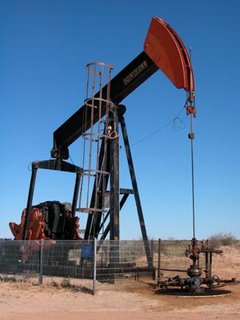Would reducing or eliminating America's dependence on foreign oil undercut the economic basis of Islamophobia?
It might to a degree, but not nearly to the extent that it might have if this was the mid 70s. Although I was only a teenager at the time, the mid 70s seemed to be the main era when Islamophobia was based largely on economics. The trigger event was the oil crisis of '73-'74, which awakened the Western public to both their oil dependence and the fact that Middle Eastern society (in particular) was being built upon petrodollars. This awakening brought about a number of articles that I remember reading which tended to be anti-Arab, anti-Islam. One cartoon I remember from that era showed an Arab sheikh in his thobe and kaffiyah standing on the rim of the Grand Canyon and being told by a man in a business suit behind him that "It's not for sale." (This reminds me of the late 80s, when Japanese businesses began buying up a lot of American businesses and properties, with a resultant backlash against the Japanese at that time; Michael Crichton cashed in on that xenophobia with his book (and movie), Rising Sun.)
But since the mid 70s I'd say that the economic basis for Islamophobia has dwindled fairly dramatically. American Islamophobia today tends to be rooted in a lot of other, non-economic factors (e.g., terrorist acts committed by Muslims, American military misadventures in the Middle East (Lebanon, Iraq) and Central Asia (Pakistan, Afghanistan), the Iranian hostage crisis and the dysfunctional diplomatic relationship between the US and Iran ever since, America's blind support for Israel, and the rise of a more visible, more active Muslim community, both in the U.S. and worldwide, that scares American non-Muslims both politically and religiously).
As for foreign oil, as of two years ago (June 2008, when I last wrote about this), five of the top ten countries the U.S. imported oil from were non-Muslim: Canada (who was the #1 seller of crude oil to the US at the time), Mexico, Venezuela, Angola and Ecuador). The first three of those countries provided over 44% of all the U.S.'s imported crude oil. So the U.S. is not quite as dependent upon oil from Muslim countries as perhaps they were in the past.
Personally, I don't think that, even if the U.S. didn't buy a single drop of crude oil from a Muslim country, that would stop all the Islamophobia in the U.S. Many Americans simply can't live without having someone else to hate. Some Muslims haven't helped the American (and worldwide) Muslim community with their actions, but Muslims aren't the only group currently being vilified in the U.S. at the moment. The Hispanics can attest to that.





